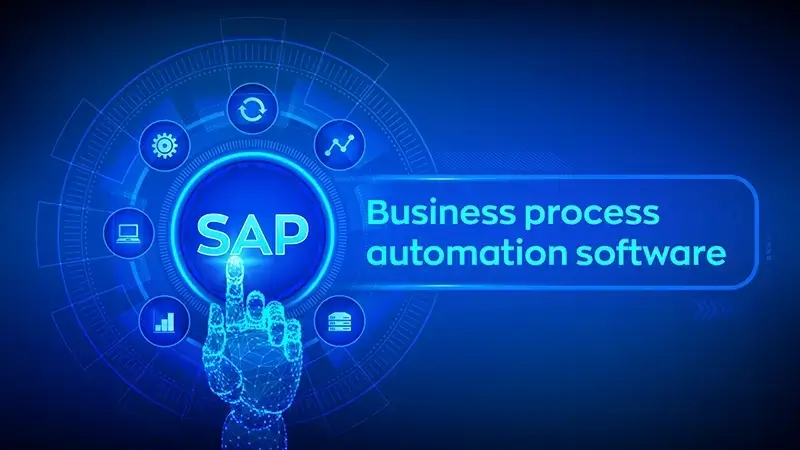SAP Business One: the best ERP
In today's fast-paced business environment, small businesses need efficient and reliable tools to manage their operations and stay competitive. One...

Business processes are the heart of every organization. Their proper functioning has a direct impact on long-term success and supports corporate objectives. Business process management systems, or BPM, are the basis for continuous optimization and successful transformation.
The term Business Process Management (BPM) is known in Spanish as Gestión de Procesos de Negocio. It is a method to design, execute, analyze, and continuously improve each business process. The goal is for each process to adapt to the needs and objectives defined by the organization. This will impact on improved customer satisfaction and the creation of long-term value.
In other words, BPM seeks to optimize processes to orient them towards specific objectives. The central question is "who does what, when and with what" Only those who know their processes from start to finish and how they work can also optimize them. That is why BPM business processes are the core of every organization.
On the other hand, a business process management system (BPMS) is the technology that makes BPM possible. This type of software provides tools and platforms for organizations. In this way, processes can be designed, tasks can be automated, performance can be monitored, and data-driven decisions can be made to improve efficiency and agility. There is currently a wide variety of BPM systems and software on the market.
Business Process Management (BPM) is primarily concerned with the management and optimization of business processes. In contrast, Business Process Management Systems (BPMS) provide the necessary software infrastructure that facilitates these activities. BPMS enables the automation, analysis, and monitoring of processes, thereby enhancing the execution of BPM practices.
BPM is a differentiator that places the company ahead of its competitors. In addition to improving competitiveness and highlighting the brand in the market, Process Management guarantees a series of sales, which we detail below.
Process management ensures greater organization and transparency throughout the company. If processes are better defined, all steps are clear for teams and even for audits.
Designing and modeling all processes allows for a 360º view of the business, understanding end-to-end activities. Once documented, processes are systematized and independent of who performs a particular role.
A clearer understanding of processes speeds up work steps and reduces unnecessary actions. Those responsible for each task know what needs to be done. This optimizes time without negatively impacting product quality.
Process management allows for the most efficient use of resources, including human resources, time or raw materials. This ensures that costs are reduced intelligently, without compromising the company's productivity.
In addition to reducing costs and optimizing time in the company, it increases the quality of the product or service. This is because it is possible to understand the opportunities for improvement in each process, promoting continuous evolution in the business.
A lack of information can make management difficult. With Process Management, leaders have a better view of the business, improving the decision-making process and, consequently, the results.
Clear and well-defined processes are synonymous with optimized execution and engaged employees. This translates into greater talent retention.
To understand the success of actions, it is essential to evaluate activities. Process Management helps to identify the best business performance indicators, precisely through the broader view of the company. This makes it easier to understand what has worked, what needs to be changed, and what is needed to achieve objectives and, therefore, promote continuous improvement.
In order to represent company processes in a clear graphical manner, graphical notations can be used. These include the Event-Driven Process Chain (EPC) or the Business Process Model and Notation (BPMN). These notations form the basis for professional management of any business process. The BPMN 2.0 modeling language is currently a widely used standard for business process modeling.
The notation is ideal for clearly depicting the BPM lifecycle. The phases of the various activities can be represented in a control loop, which is a central component of process management. It provides a detailed view of the business process landscape and reveals optimization potential.
Companies act dynamically and continually adjust their own processes and objectives. Therefore, the individual phases of the entire BPM lifecycle are executed repeatedly:
In the first step, the existing processes are analyzed. In addition, certain objectives are defined that are to be achieved with business process management. A process architect is responsible for designing and building models for production processes. This includes workflows, key performance indicators and control strategies.
In the modeling phase, the company selects new processes to describe them individually according to its own wishes and defines the target processes on this basis.
The modeled business processes are recorded and documented. They are then implemented in a process model, published in the internal IT system, and executed.
This phase analyses the processes. A data-based comparison of the actual processes with the modeled specifications is made. As a result, the optimization potential is obtained.
Based on the knowledge gained, process improvement measures are implemented and target definitions are applied. The main objective is to continuously monitor and improve production times. Cost efficiency, reduced error rates and other key figures are also sought.
With the adjustments to the processes, a new design phase begins. The BPM life cycle is closed and the control loop starts again. Ideally, all processes should go through this control loop and the phases of the entire life cycle should be taken into account. Only then can progress be measured and processes be continuously optimized.
If you want to implement Process Management in your company, here are five steps that can help you. Understand the maturity of your processes. First of all, you have to make a diagnosis of the current processes. Although many organizations use some management and quality systems, the maturity of these processes is often low. This can be reflected in the lack of structure and standardization of activities, rework, audit notes, and dissatisfied customers.
By systematically designing, modeling, executing, controlling, and optimizing processes, Business Process Management (BPM) ensures that business operations are firmly aligned with strategic objectives and can adeptly respond to market demands. By adopting BPM and utilizing Business Process Management Systems (BPMS), organizations decisively unlock their potential for innovation and sustainable growth, driving long-term success.

In today's fast-paced business environment, small businesses need efficient and reliable tools to manage their operations and stay competitive. One...

Users are becoming increasingly mobile and networks are migrating to the cloud. This trend requires companies to have security controls capable of...

Digital transformation is no longer a future trend; it is an essential reality for companies seeking to grow, innovate, and stay competitive in an...